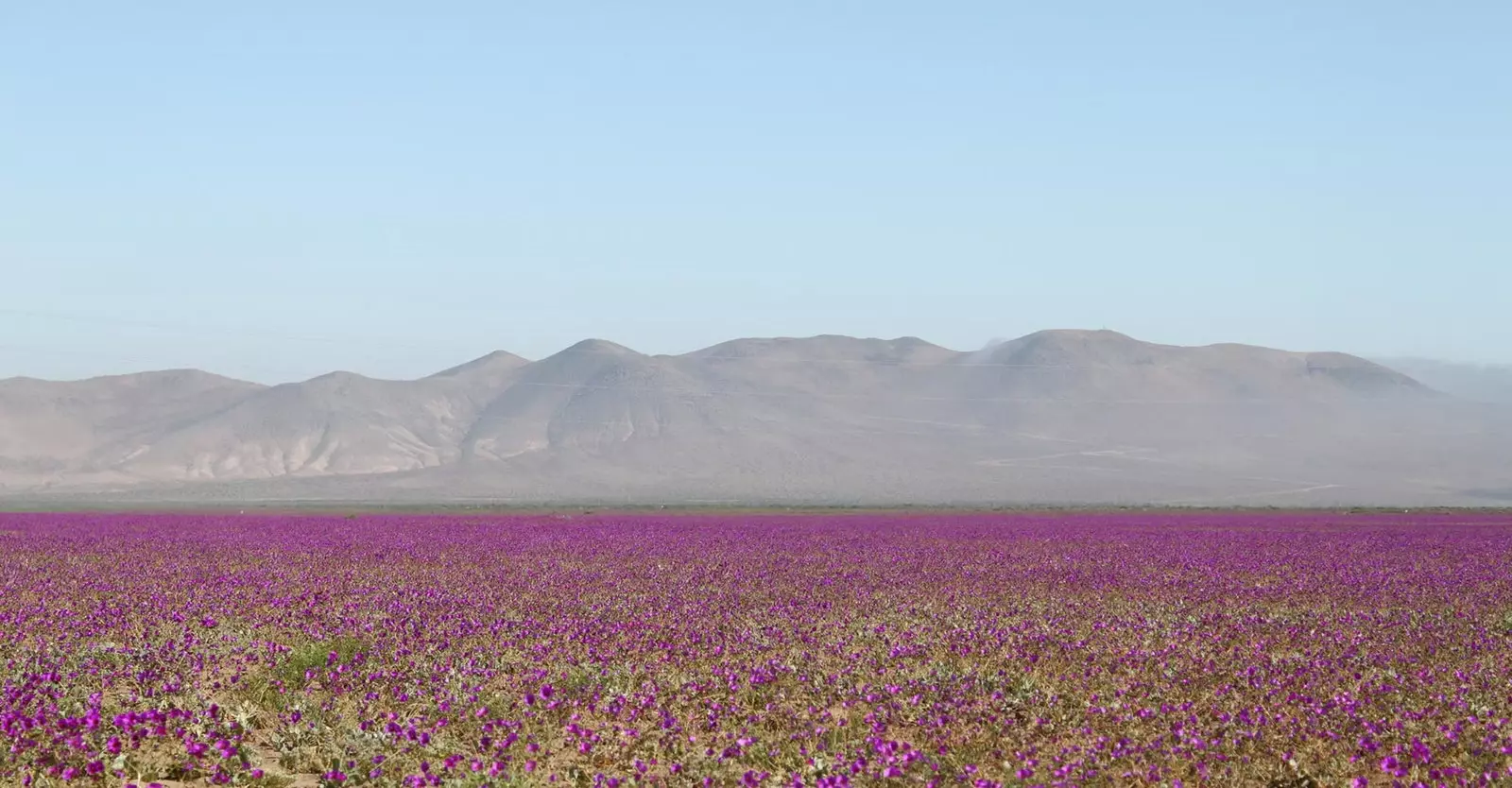
The driest desert in the world, turned into a garden with flowers
"A phenomenon of this intensity has not been seen in 20 years." This is Roberto Vergara speaking, tour guide. "The last flowery desert was recorded in 2015," he explains. This year it could last until mid-October and its high point will take place this September. It will be when a greater number of species are in flower.
The flowering desert takes place with some regularity, in a period of between three and five years. Certain circumstances must occur for flowering to occur. Nevertheless, climate change and the greater occurrence of El Niño seem to have increased the frequency with which this phenomenon occurs.
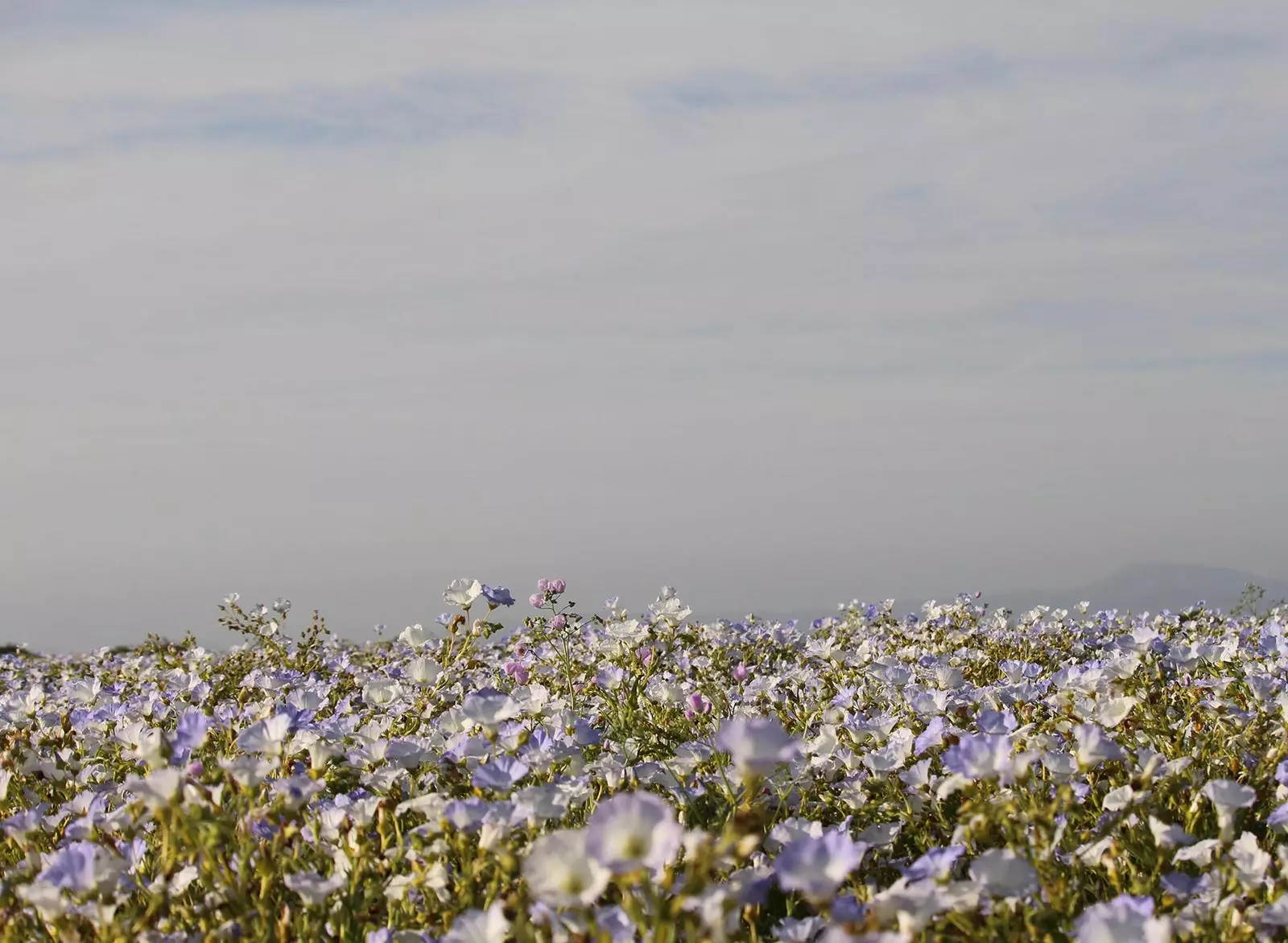
It had been 20 years since the phenomenon was so intense
WHAT MUST HAPPEN FOR THE DESERT TO BLOOM?
The seeds and bulbs remain for years buried and dormant, inertly, in the shade of the desert. They await the perfect combination between the decrease in temperature and the winter rains, which should be above 30 millimeters. That's when the magic happens. A festival in which it is possible to appreciate up to 200 species.
Vergara is in luck this year thanks to the unprecedented flowering. "Without a doubt, there is a greater influx of tourists to the area with the phenomenon of the flowery desert," he explains. Thus, His efforts these days are focused on bringing visitors from all over the planet closer to the flowery desert who come to this area of the Atacama in search of this exceptional work of nature.
It is not surprising that the flowery desert arouses great interest among foreign tourists. Germans and French are in the lead, but the number of Spaniards interested in the phenomenon is also growing. Up to 35,000 people are expected to visit the flowery desert , in a projection that has been recently enlarged.
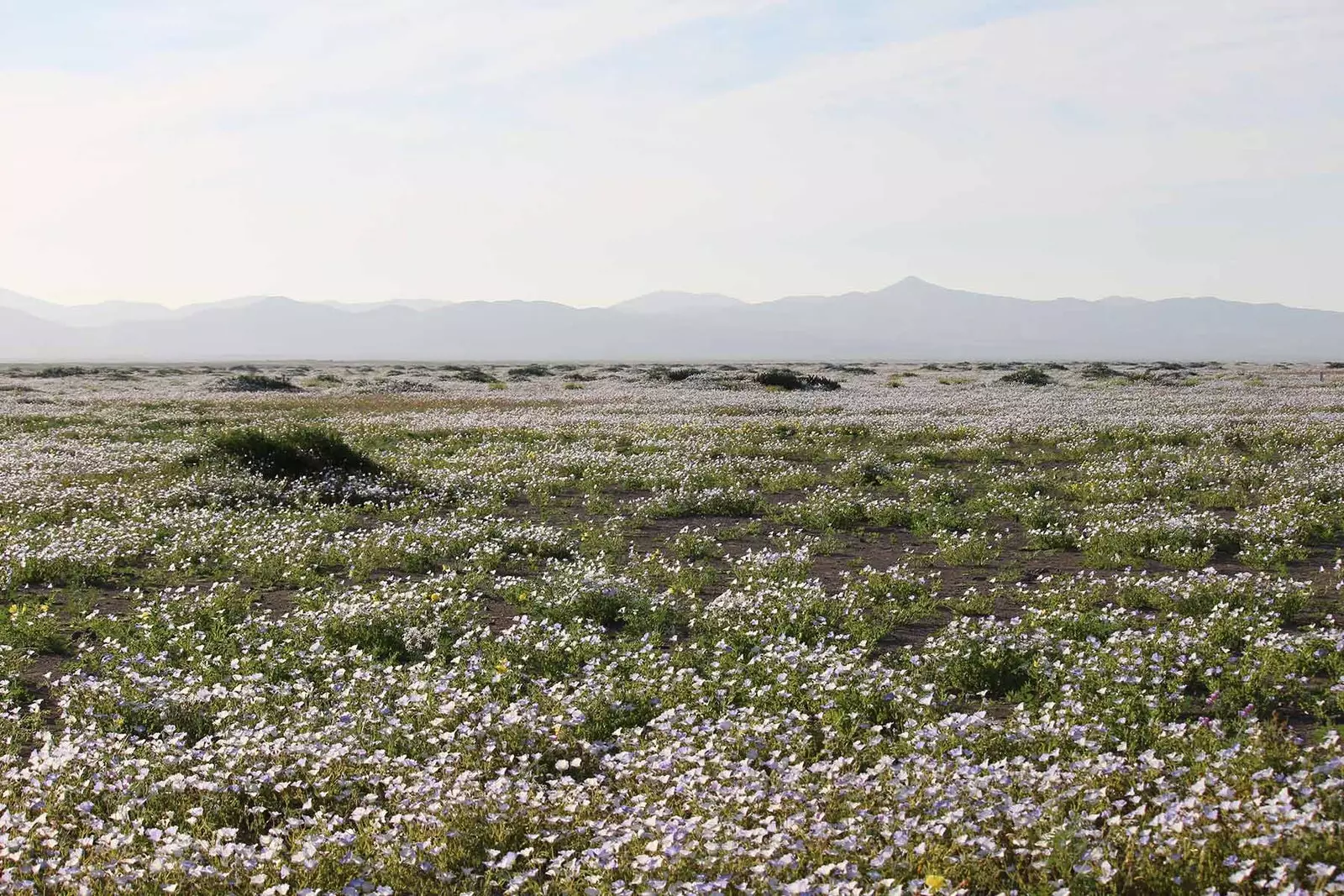
This year, wear white
ON THE WAY TO THE SEA OF FLOWERS
The flowery desert appears in all its extension in several zones. One of the most flowering agglutinates is in the surroundings of the section of the 'Ruta 5' , which unites the cities of Copiapó and Vallenar. Specifically, in the vicinity of the Llanos de Challe National Park , where these plant species appear here and there with dense mantles of flowers.
The plains here are presented in the manner of the Atacama desert. Aridity and grasslands rule. During certain periods, unlike other areas of the desert, the morning mists appear, which the locals know as ' camanchacas'.
A good alternative is undertake the route that leads from the town of Huasco Bajo to the National Park. First you have to stop to contemplate the roar of the Pacific on the white sand beaches. With luck you will be able to see some guanaco, a fundamental member of the native fauna.
There the first signs of the flowering desert are already perceptible. Following the path first to Carrizal Bajo and then to Totoral, the multicolored mantles are more and more noticeable. It is inevitable to stop the vehicle and look out over the meadows.
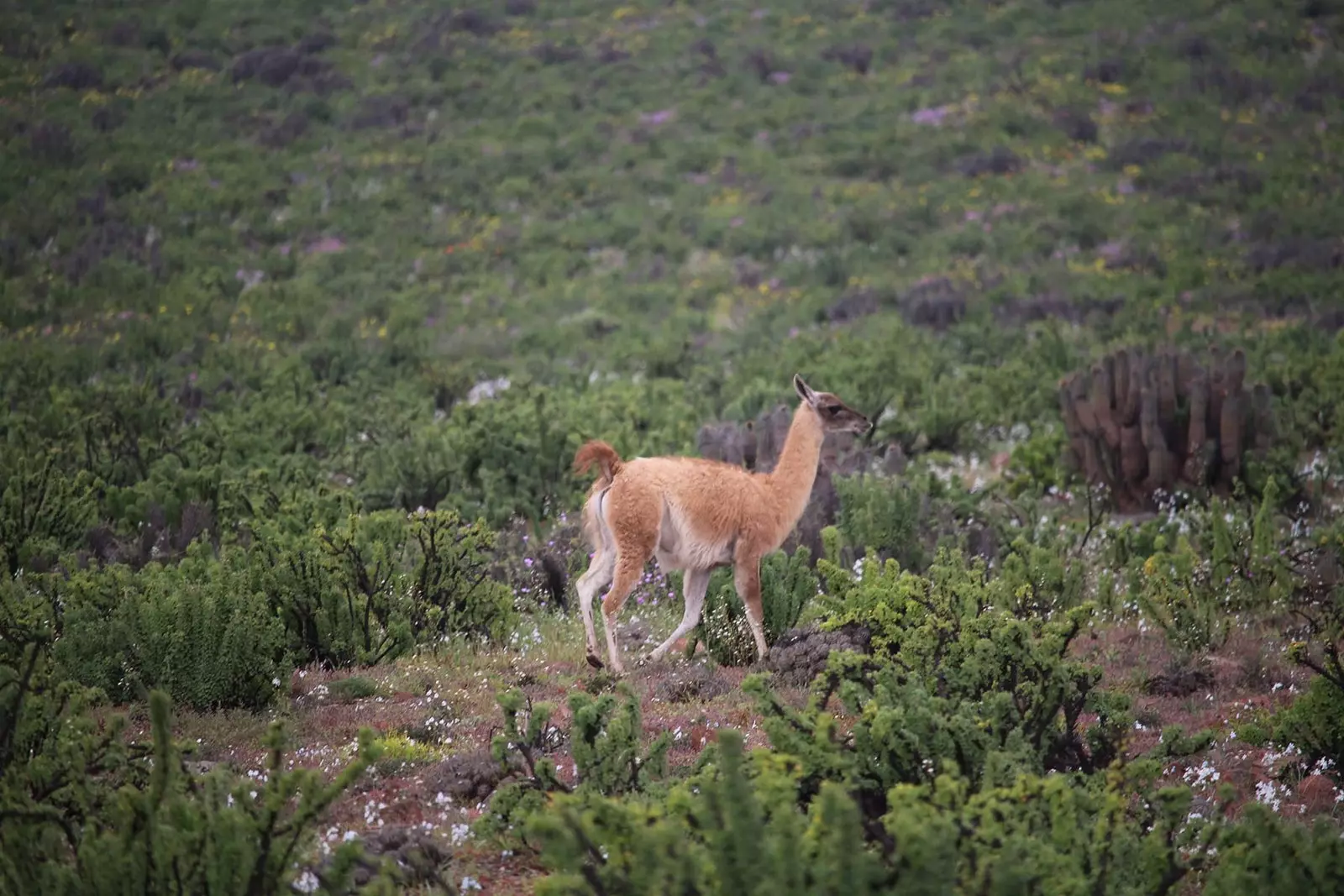
With luck you can see a guanaco
NEAR 70 ENDEMIC SPECIES
"Be careful not to step on the flowers," warns Vergara as he steps firmly into the flowery desert. Many of the species that flourish here -about 70- are endemic. If they are stepped on or cut, they will never grow back the same, she explains. The white nolans are the most widespread flowers now, but they are dotted with copaos or sighs of the sea. Beauty everywhere.
Follow the road to Totoral, a small town in which the constructions are mostly made of adobe on the walls and totora on the roofs. It is a cane that grows on the few riverbanks in the area and that gives its personality to this charming little town, which swirls around its small church.
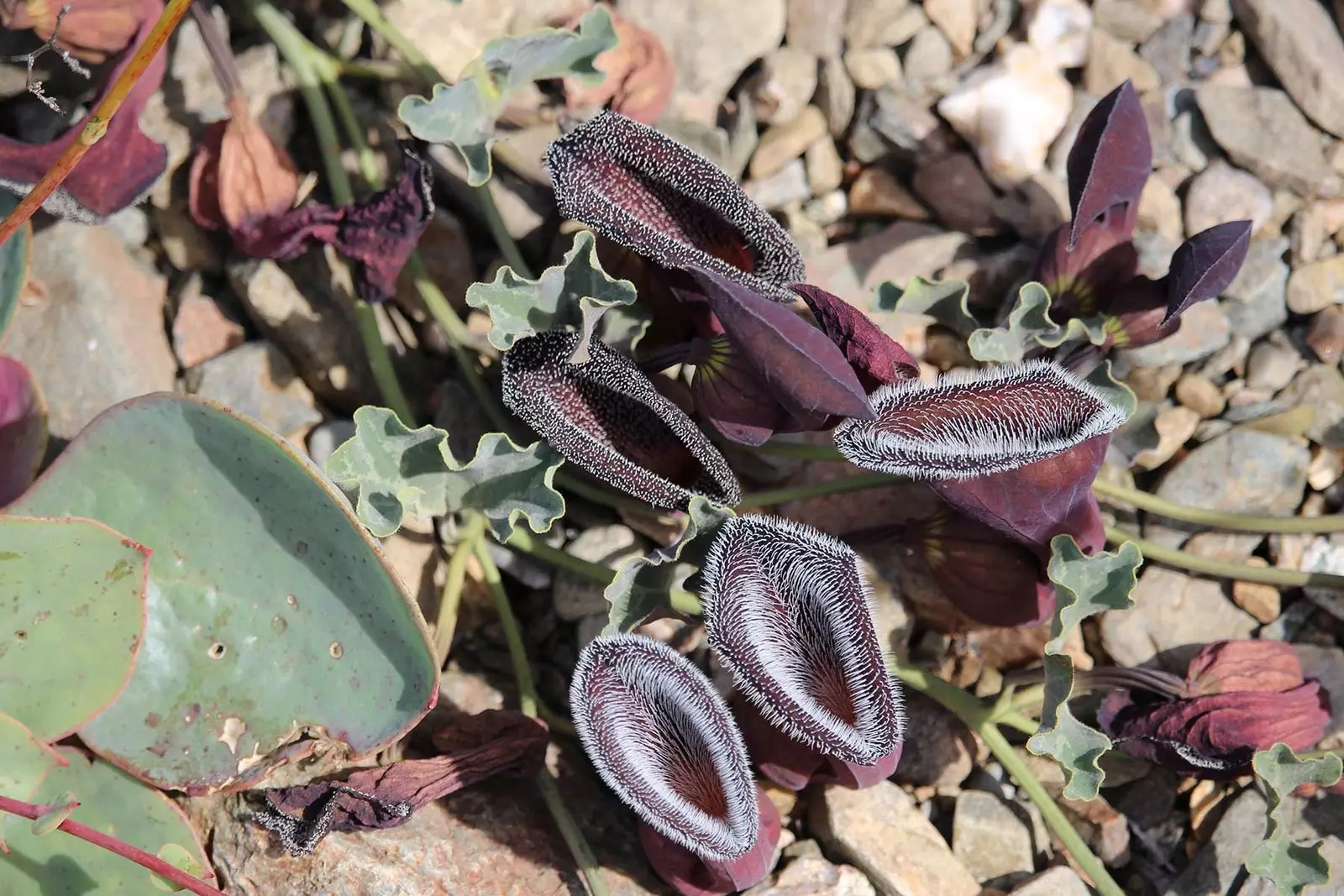
fox ear
Once past Totoral, back to 'Ruta 5', the large and extensive meadows covered with flowers have a hypnotic effect. What under normal conditions is an extensive sandy pampa is covered with a mantle of white flowers that transport far from the traditional desert image. So far away that, for a moment, one doubts that this could be the driest desert in the world.
There are only three points on the globe where deserts flourish: in California (United States), in Central Australia and in the Atacama . In the latter, there are areas where it is possible to measure rain of 1 mm. or more may take place once every 15 or 40 years.
In fact, they have been recorded periods of up to 400 years without rain in its central sector. However, the rain is less stingy some winters. Then he sneaks into this sector of the Atacama making the impossible come true: let the desert bloom.
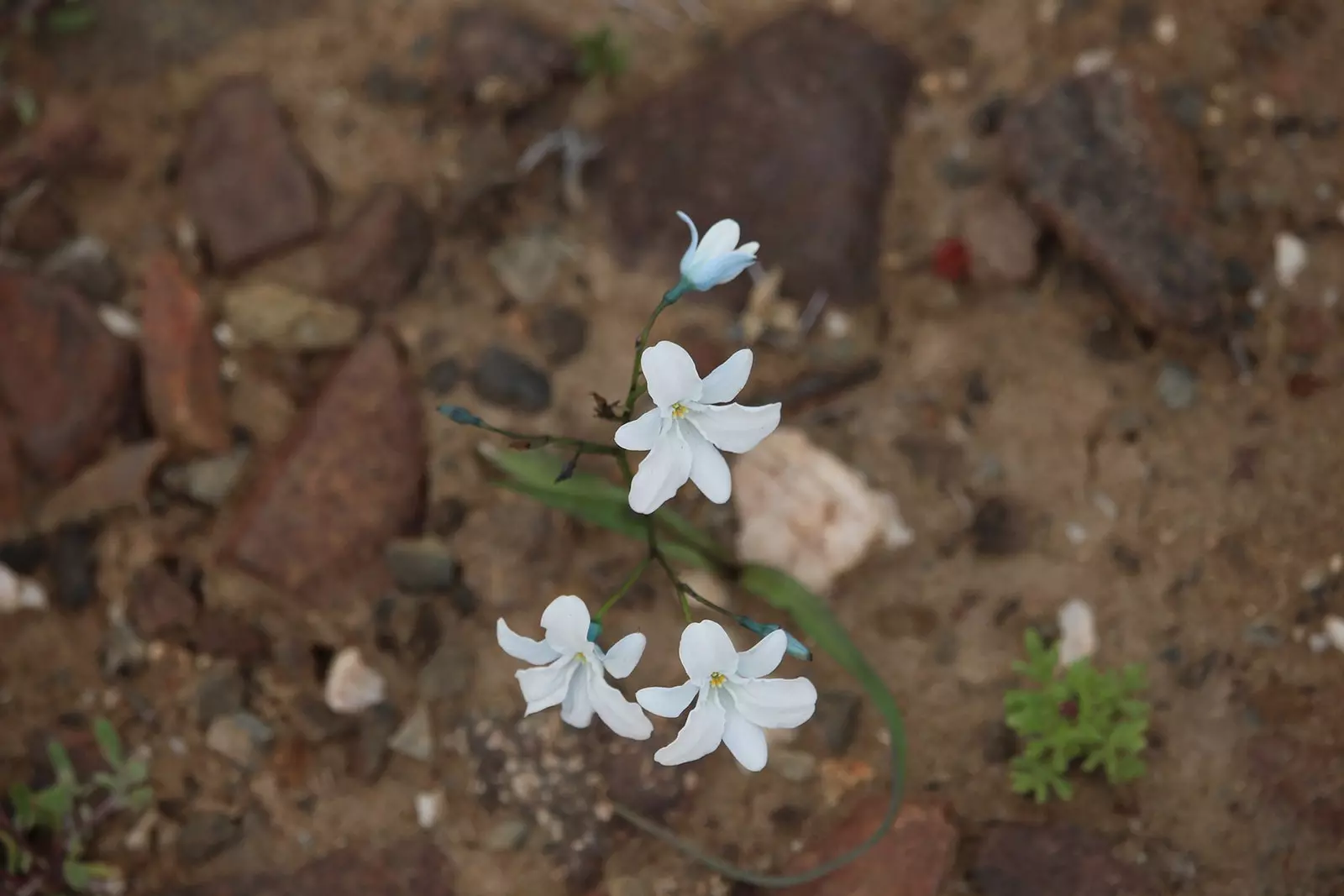
white nolan
